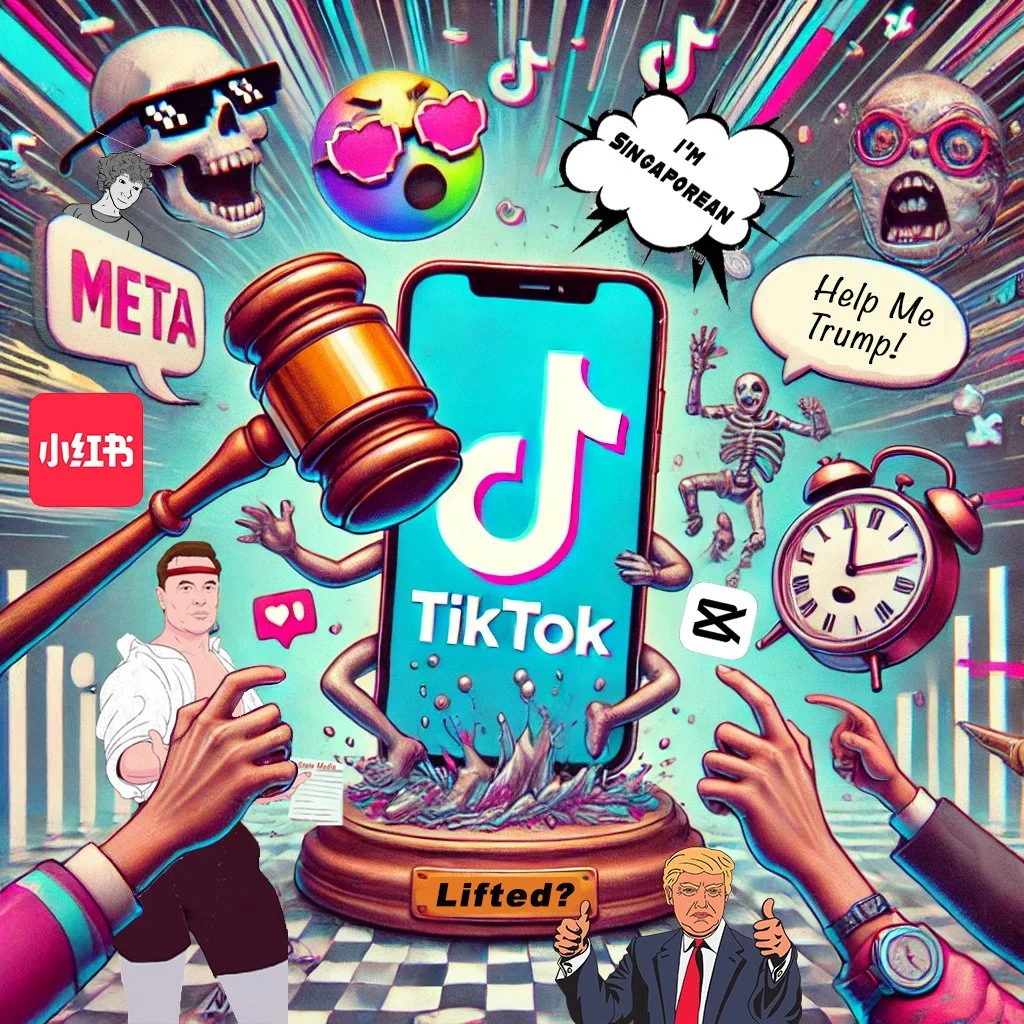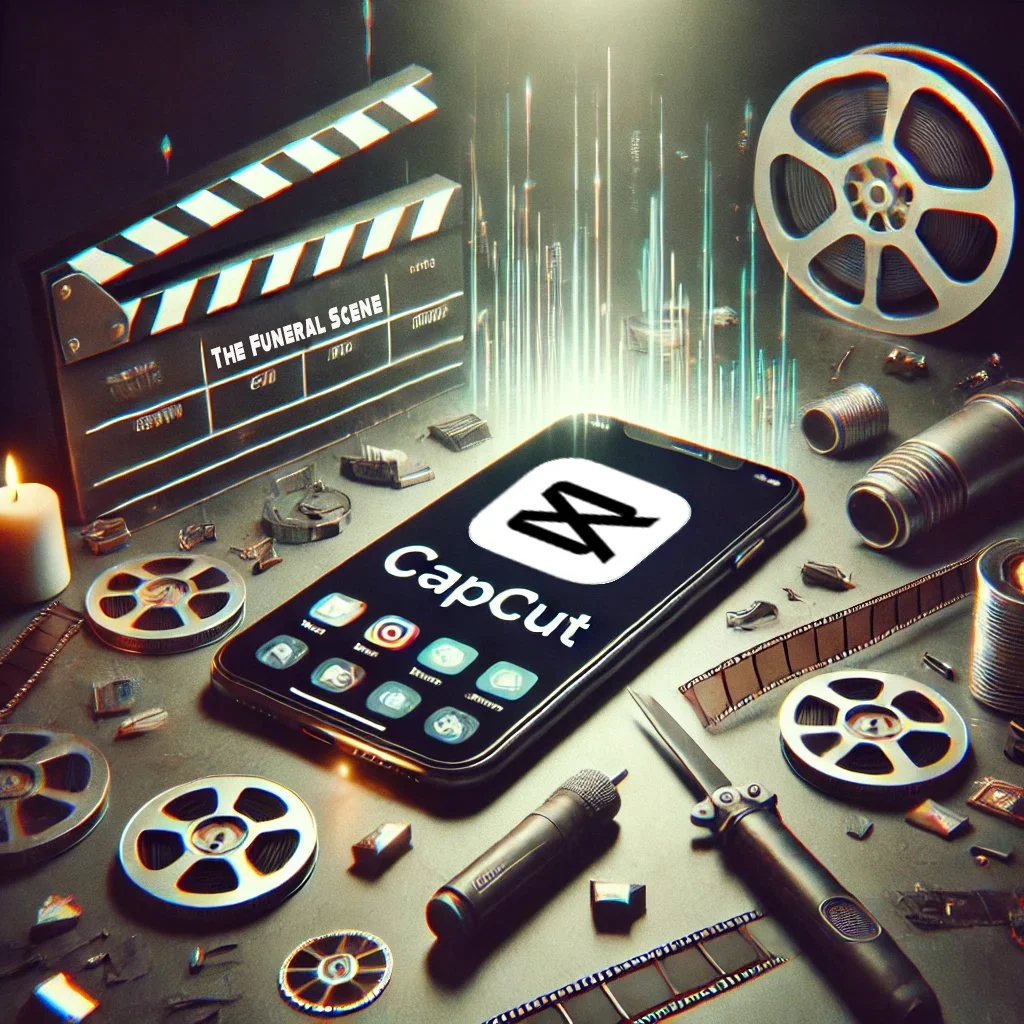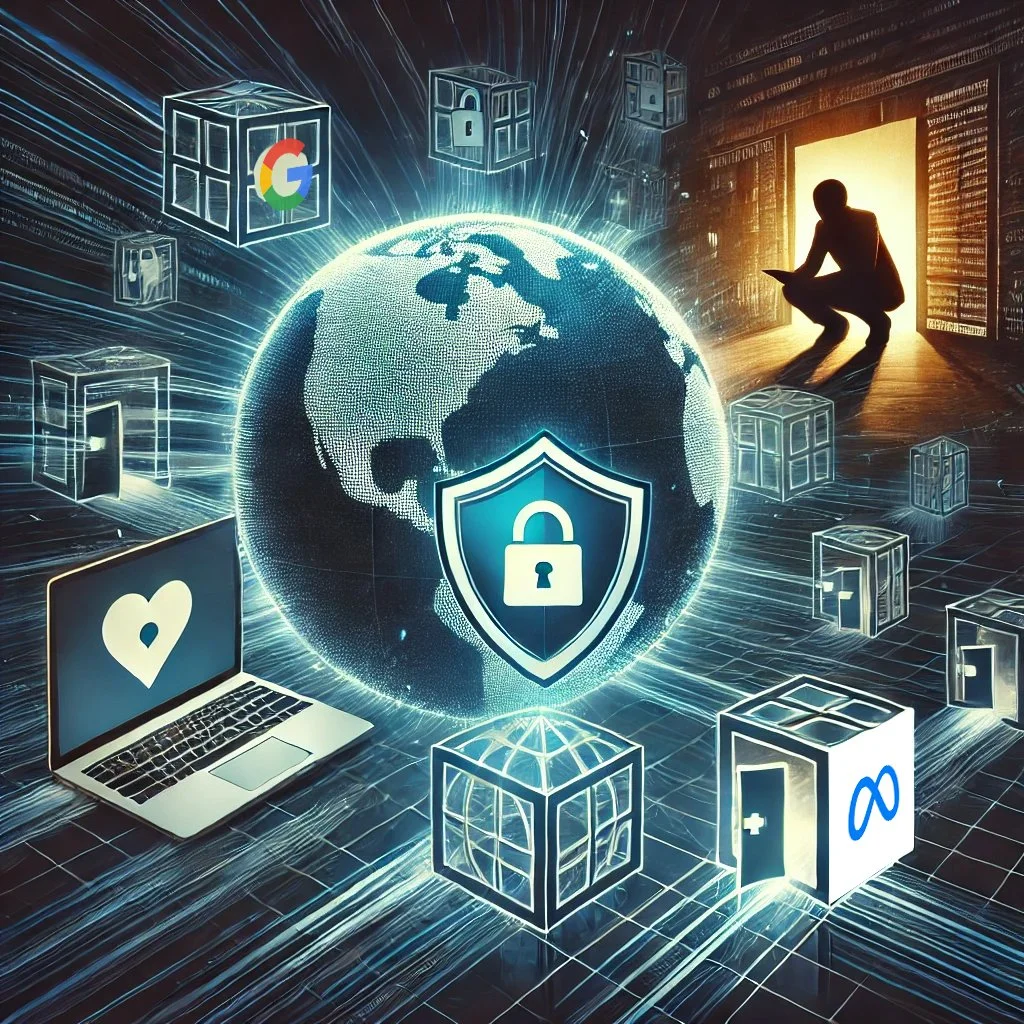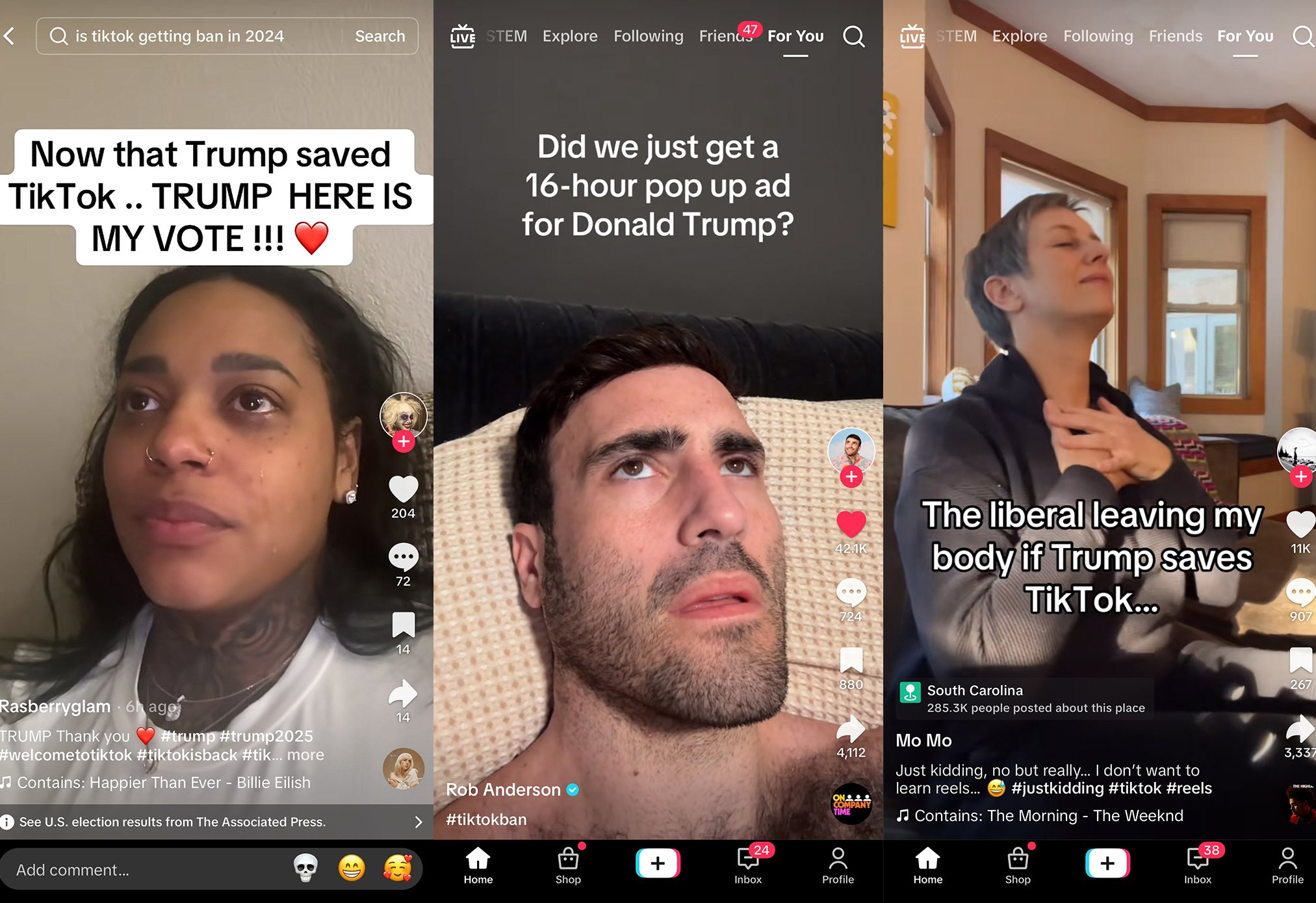The ByteDance Breakdance (or something like that)
A Rollercoaster for Creators
Today has been nothing short of a rollercoaster ride for content creators, influencers, editors, producers, artists, small business owners, and countless others. At midnight, ByteDance apps officially bit the dust in the United States. The infamous TikTok ban took effect—but it didn’t stop there.
To the shock of many, all ByteDance apps were banned simultaneously, leaving users scrambling to adjust. This included popular tools like CapCut and Lark—apps that aren’t just casual diversions but integral to the workflows of many professionals.
When the Ban Hit Home
Personally, I’ve watched the chaos unfold within my own circle. Interns, friends, and colleagues were blindsided. For some, years of work files stored in Lark disappeared. For others, CapCut’s sudden disappearance brought their video projects to a screeching halt.
As for TikTok? By 1 PM Eastern today, it seemed like the ban had been partially lifted—but only for those who already had the app installed. If you’d deleted TikTok or wanted to download it for the first time, you were out of luck. According to Apple, visitors to the U.S. might still have some limited access to the app, though, for now, even that is precarious.
Here’s what Apple said in the App Store:
“TikTok and ByteDance Ltd. apps are no longer available in the United States, and visitors to the United States might have limited access to features.”
They followed with a detailed breakdown of the affected apps, including TikTok, CapCut, Lemon8, Lark, and others. Most notably, users in the U.S. will no longer receive updates, security patches, or the ability to make in-app purchases. Essentially, these apps are frozen in time.
The Case For Capcut
This isn’t just about political chess games. The fallout from the ByteDance app bans—especially CapCutX—is poised to shake the creator economy in ways most people haven’t even begun to realize.
Here’s the thing: CapCutX isn’t just another mobile video editor. For an entire generation of creators, it’s been the go-to tool for producing short-form content quickly and efficiently. Sure, plenty of people use it for fun—slapping together trendy TikToks with templates or experimenting with viral effects. But for a massive chunk of creators, influencers, and small businesses, CapCut has been a cornerstone of their livelihoods. We’re talking about freelancers, social media managers, caption creators, and even translators—people who depend on its fast, intuitive tools to churn out high volumes of content.
The Beauty of CapCut
Let’s not pretend CapCut was designed to rival industry titans like Adobe Premiere or Final Cut Pro X. That was never its mission. CapCut thrived in its niche as a tool for speed and accessibility. It wasn’t about delivering cinematic masterpieces—it was about empowering creators to get things done.
Its user-friendly design and AI-driven features democratized the editing process. It gave creators the ability to auto-generate captions, translate text, and refine talking-head videos—all on the fly. Whether you were a politician needing quick campaign clips, an influencer managing multiple platforms, or a small business pumping out ads, CapCut made it easy. It wasn’t just a video editor; it was an enabler of efficiency.
The Big Question: What’s Next?
With CapCut potentially disappearing for many users, creators are left scrambling for alternatives. The problem? There’s no obvious replacement.
Yes, Adobe Premiere Pro, Final Cut Pro, and DaVinci Resolve are powerful. But let’s face it—these heavy-duty editing suites are overkill for the average content creator. Most people don’t need full-scale post-production tools to polish a 60-second clip for social media. They need speed, simplicity, and customization.
Let’s break it down:
• Final Cut Pro X: Apple’s offering is user-friendly and clearly inspired CapCut’s layout, but it’s still geared toward long-form content like short films or YouTube videos. Plus, Apple has been slow to integrate AI tools, leaving a significant gap in its capabilities.
• Adobe Premiere Pro: A fantastic tool for high-end production, but it’s expensive, resource-heavy, and too complex for quick-turnaround projects.
• DaVinci Resolve: While increasingly popular, it’s hardly the beginner-friendly or lightning-fast solution most creators are seeking.
So, where does that leave us?
A Gap in the Market
The ByteDance ban has exposed a major gap in the market: the need for an app that balances speed, accessibility, and AI-driven efficiency. There’s a huge opportunity for either an existing player or a new competitor to step up.
Apple might swoop in and copy CapCut’s playbook—something it has a history of doing. Adobe Express could refine its focus and cater to high-volume, short-form video creators. Or, perhaps, an entirely new app will emerge, specifically designed to fill this void.
But the bigger issue isn’t just about replacing CapCut. It’s about the broader ecosystem of creators who rely on tools like this to sustain their businesses. These aren’t just hobbyists; they’re professionals whose incomes are tied to their ability to create quickly and efficiently. Right now, many of them are in limbo, unsure of what comes next.
The Economic Impact
This isn’t just a tech problem—it’s an economic one. The creator economy is worth billions, and tools like CapCut have played a huge role in enabling that growth. By making high-quality content creation accessible to everyone, these apps have fueled new industries and opportunities. Their loss isn’t just inconvenient—it’s potentially devastating.
The RedNote (小红书) Migration: A Surprise Star Emerges. Can They Continue To Shine?
Interestingly, as ByteDance apps faded, a new star emerged: RedNote (known in China as Xiaohongshu). Over the past week, the app skyrocketed to #1 on the App Store as Americans flocked to explore it.
Originally designed for local Chinese use, RedNote wasn’t ready for the sudden influx of U.S. users. The app’s interface is primarily in Mandarin, and the content leans wholesome and community-driven, showcasing everything from Chinese culture to daily life. For many Americans, this was a wake-up call.
Instead of the “big scary dictatorship” narrative often associated with China, users found relatable content—shared values, hobbies, and philosophies. The app unexpectedly bridged a cultural gap, showing the beauty of life in China while sparking new conversations.
But not everything was smooth sailing. As Americans flooded the app, it quickly attracted its share of less savory content—thirst traps, crime videos, and other problematic posts. Chinese users were quick to call this out, urging the app to maintain its wholesome reputation. The developers scrambled to adapt, adding English language options and tightening content moderation.
Will RedNote retain its newfound popularity, or will users flock back to TikTok once the dust settles? Only time will tell.
VPNs, the Dark Web, and the Future of Internet Freedom
The ByteDance ban has also reignited conversations about internet censorship and workarounds. VPNs, for example, have become a go-to solution for users trying to access banned apps. For those unfamiliar, VPNs (Virtual Private Networks) allow users to bypass geographical restrictions by masking their location. Apple has even made this easier, integrating VPN options directly into iPhone settings.
But what about those who want to go deeper? The dark web—an often misunderstood part of the internet—offers another layer of anonymity and access. Using browsers like Tor, users can explore parts of the web untouched by traditional regulations. While the dark web has its risks, it also represents a counterpoint to the increasing centralization of the internet through platforms like social media.
The question is: Have we boxed ourselves in? Social media has become the internet for many people, leaving them unprepared to navigate a world where apps like TikTok can be taken away overnight.
Have We Boxed Ourselves In?
The ByteDance ban has forced many people to confront an uncomfortable truth: for much of the population, the internet has been reduced to a handful of apps and search engines. Social media platforms like TikTok, Instagram, and YouTube dominate our daily online experiences, while Google and Bing handle our curiosity. But what happens when these centralized platforms—on which so many livelihoods and habits depend—are taken away?
For years, the internet was hailed as a wild, unregulated frontier of information, creativity, and opportunity. You could create your own website, run a blog, host forums, and build niche communities without relying on massive corporations. But as platforms like Facebook and TikTok grew, they offered something people couldn’t resist: convenience. Why learn to build a website when you can create a TikTok account in minutes and have a built-in audience of millions? Why research deeply when Google delivers instant answers on the first page?
This consolidation of online activity has created a “box” for many users. Social media platforms are no longer just tools—they’re the entire internet for many people. A large percentage of users never venture beyond their favorite apps, and when those apps disappear, they feel stranded.
The Risks of Centralization
This centralization isn’t just about convenience; it’s about control. When most of your online presence depends on a single app or platform, you’re at the mercy of decisions made by the company behind it—or, in the case of ByteDance, decisions made by governments. Creators, influencers, and small business owners built entire careers on TikTok, only to have those careers jeopardized overnight by a political decision.
Beyond individual livelihoods, centralization also makes us more vulnerable to censorship and manipulation. If a platform decides to suppress certain types of content, change its algorithm, or even shut down entirely, users have little recourse. It’s no longer a question of whether you’ll adapt—it’s whether you’ll even survive in the new landscape.
The Social Media Paradox
Social media platforms have essentially put training wheels on the internet. They’ve made it easy for anyone to create, share, and consume content, but they’ve also limited the scope of what we explore. Everything is curated, filtered, and fed to us in algorithmically selected snippets. Over time, this creates a paradox: while social media connects us to more people and content than ever before, it narrows our view of what’s possible online.
Consider how rare it is to hear someone say, “I spent the afternoon exploring forums,” compared to, “I spent the afternoon scrolling TikTok.” Forums, blogs, and niche websites still exist, but they’re harder to find and often feel irrelevant in a world dominated by instant gratification and algorithms.
Breaking Out of the Box
The ByteDance ban might be a wake-up call for some. It’s a reminder of how fragile our digital ecosystems are and how important it is to diversify the way we use the internet. Here are a few ways we can start to “break out of the box”:
1. Explore Alternative Platforms
Don’t rely solely on one app or service. Experiment with other apps, self-hosted platforms, or decentralized networks like Mastodon or PeerTube.
2. Rediscover the Open Web
Visit independent blogs, forums, and websites. Tools like Reddit can still act as directories for niche communities and interests.
3. Create Beyond Social Media
Build your own website or portfolio. Platforms like WordPress or Squarespace make it easier than ever to establish your online presence without depending on social media.
4. Learn New Tools
Instead of sticking to one app, explore alternatives for video editing, collaboration, and content creation. Even if you prefer one tool, having backups ensures you’re not stuck when it’s gone.
Reclaiming the Internet
Social media and search engines have boxed in the way many of us use the internet, and the ByteDance ban has shown just how precarious that box can be. But the open web still exists, waiting for us to explore it. We don’t have to give up the conveniences of apps and platforms, but we do need to be mindful of the risks of over-reliance. After all, the internet was built for freedom—not for boxes.
TikTok Thanks Trump: A Political Puzzle Wrapped in Gratitude
When TikTok came back online today, users were met with an unexpected message: a thank-you to Donald Trump for his efforts to help reinstate the app. TikTok’s statement credited Trump’s involvement in potentially lifting the ban and restoring access, and it didn’t take long for users to react.
Gratitude poured in from all corners of the platform. Even users who openly dislike Trump—or didn’t vote for him—posted videos acknowledging his role in getting TikTok back up and running. For creators, influencers, and small businesses whose livelihoods depend on the app, this wasn’t just a win; it felt personal. The hashtag #ThanksTrump quickly trended, flooding the For You page with a mix of heartfelt appreciation, ironic memes, and reluctant praise.
But as with anything involving Trump, the gratitude came with a side of controversy and conspiracy theories. The 90-day extension mentioned in the Protecting Americans from Foreign Adversary Controlled Applications Act isn’t as simple as it seems. According to the stipulations, any extension requires ByteDance to be actively in the process of selling TikTok to a U.S.-based company. This raises a host of questions:
• Does Trump know something we don’t?
• Is there already a buyer lined up, waiting to swoop in and take ownership?
• Could Elon Musk be adding TikTok to his collection, alongside X (formerly Twitter)?
• Or is this part of a broader plan to consolidate social media influence under U.S.-based companies aligned with Trump’s vision?
Fueling these theories, TikTok’s CEO recently removed “CEO” from his profile on TikTok itself, adding yet another layer of mystery to the situation. Users have been quick to point this out, speculating whether it’s a sign of major changes happening behind the scenes. Is TikTok already deep in negotiations for a U.S.-based buyer? Or does this signal an internal restructuring to align with the stipulations of the 90-day extension?
Another concern lies in who the potential buyer might be. If companies like Meta or X (formerly Twitter) are involved, it could raise serious antitrust questions. With Meta already owning Facebook, Instagram, and WhatsApp, and X under Elon Musk’s control, adding TikTok to their arsenals could push the boundaries of what we consider a monopoly. Consolidating so much influence under just a handful of companies would reshape the social media landscape—and not necessarily for the better.
Other theories have begun swirling about whether this could pave the way for a more controlled media landscape in the U.S.—one that mirrors aspects of China’s state-run approach. It’s no secret that Meta has shifted its tone and seems to be favoring Trump more openly. If TikTok is sold to a U.S. company with similar leanings, could we see a future where major social media platforms act as de facto state-run media?
State-Run Media?
This is where the debate gets tricky. On one hand, China’s tight control over its media landscape, while controversial, has undeniably worked to its advantage in some ways—allowing for a unified national narrative and rapid policy implementation. On the other hand, the idea of state-influenced media in the U.S. goes against core democratic values like freedom of speech and a free press.
But what if we’re already there? Social media platforms have become the de facto town squares of modern life, wielding incredible influence over public discourse. If companies like Meta, X, or a hypothetical U.S.-owned TikTok begin aligning more explicitly with political figures, does that not create a shadow version of state-run media? And is that something Americans would tolerate—or even benefit from?
(For the record I’m completely against political censorship)
Hope for Balance
Still, even if Trump—or any leader—dreams of a state-run mouthpiece, it’s hard to imagine a scenario where all free speech is extinguished in the process. As long as those rights remain intact, people will flock to platforms that feel more free, more open, and less controlled. History has shown us time and time again: the internet is resilient, and users adapt.
That said, let’s hope Trump doesn’t turn heel and start banning apps himself. If the ByteDance ban has taught us anything, it’s that the internet can survive these disruptions. New platforms will rise, creators will find a way, and free speech will persist. The question is whether our current leaders and tech giants will foster an environment that encourages freedom—or one that prioritizes control.
Conclusion: The Beginning of a New Digital Era
The ByteDance ban has revealed the fragile dependence of the creator economy on centralized platforms. While Trump’s intervention brought TikTok back for now, it raises deeper questions about the future of free speech, political influence, and media control.
RedNote’s rise and the scramble for alternatives show the internet’s resilience, but also highlight how boxed in we’ve become by a handful of apps. As long as free speech and innovation endure, creators will adapt, and new platforms will rise.
This moment is more than a disruption—it’s a turning point. The creator economy will survive, but what comes next will shape the future of digital freedom for all of us.
Stay tuned—this story is just beginning.
